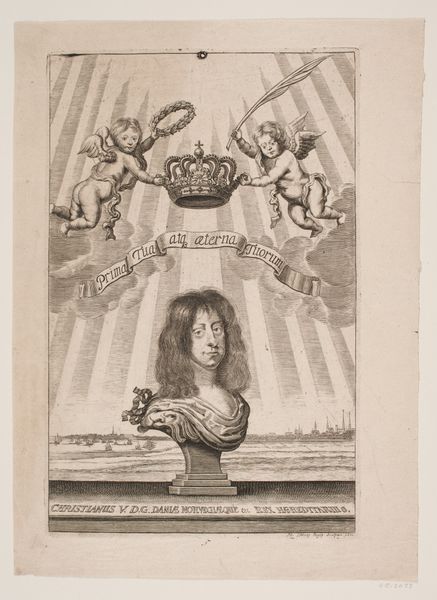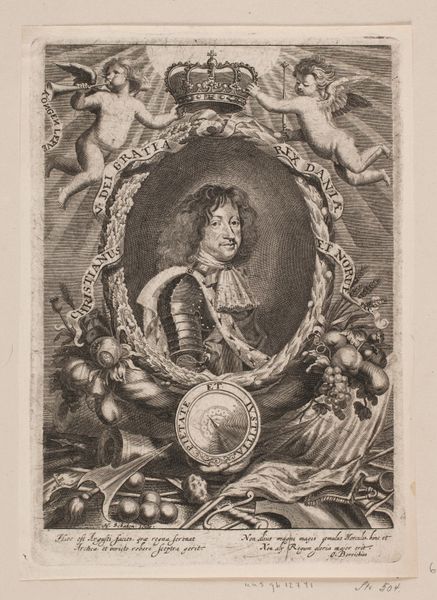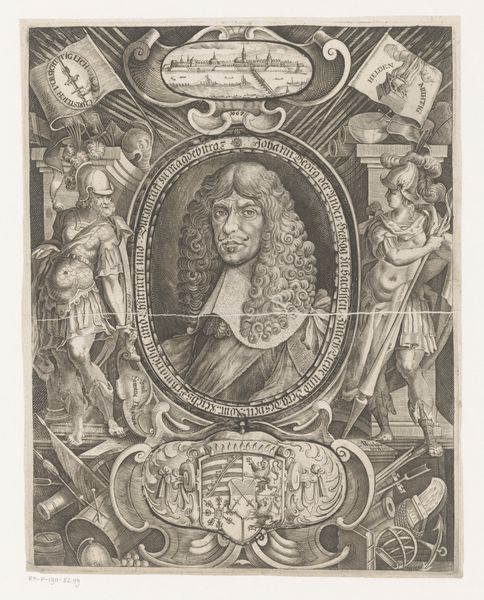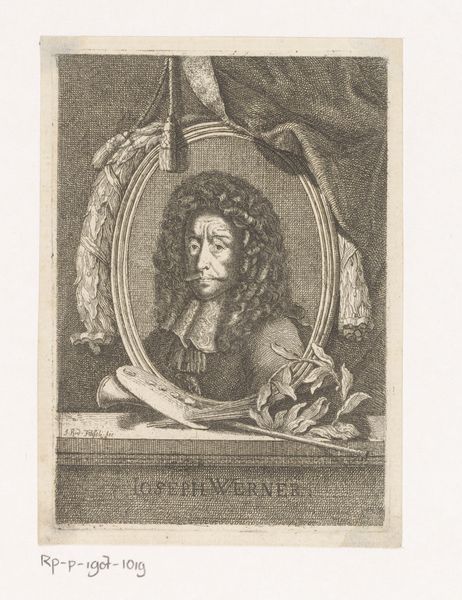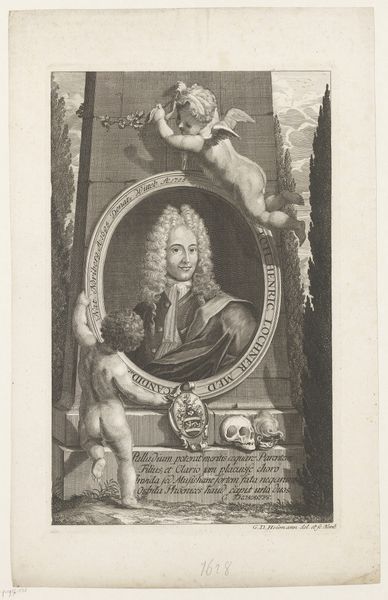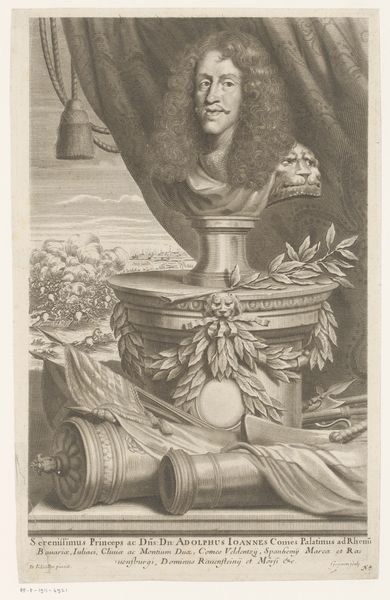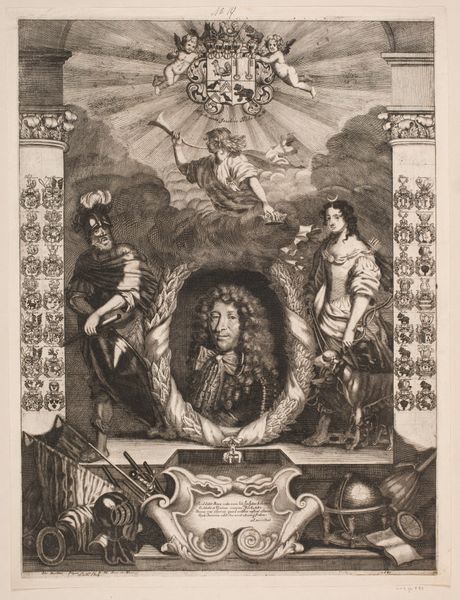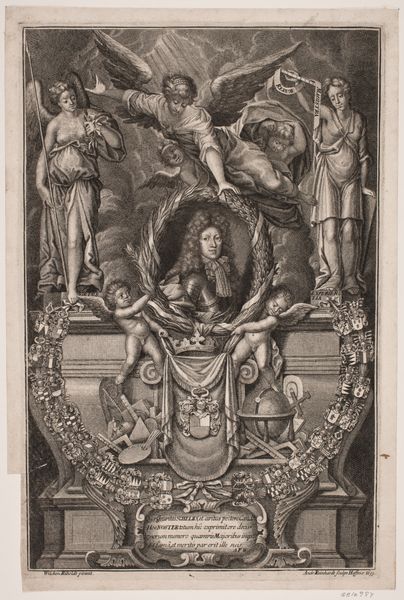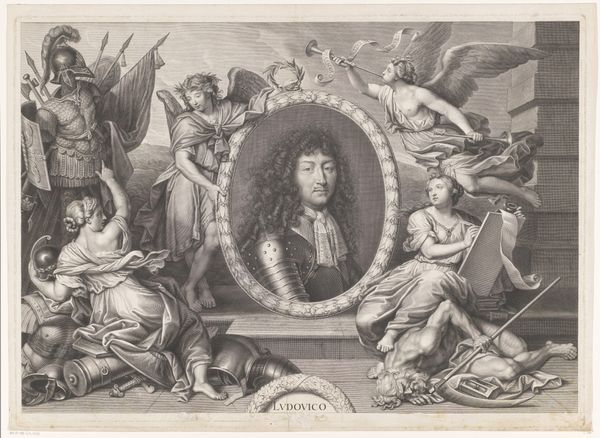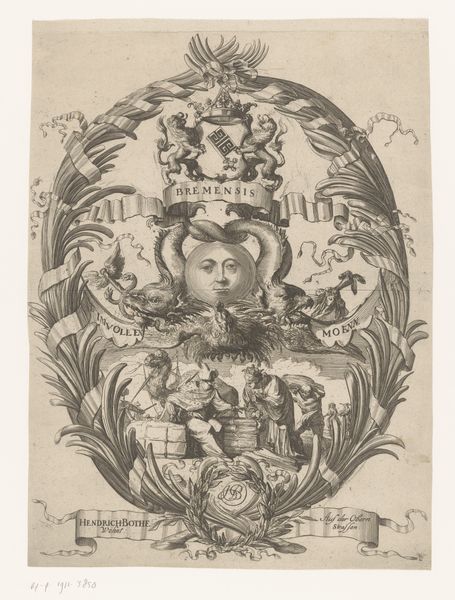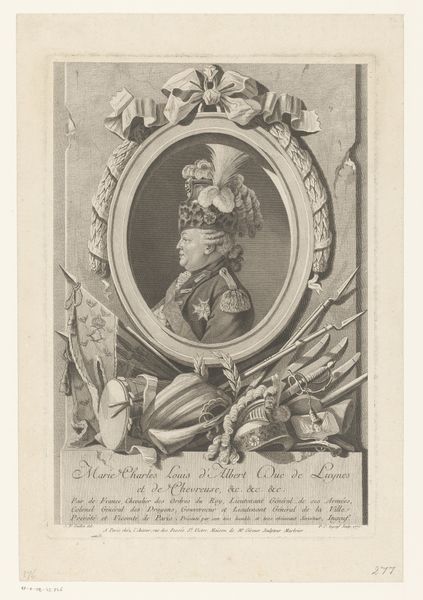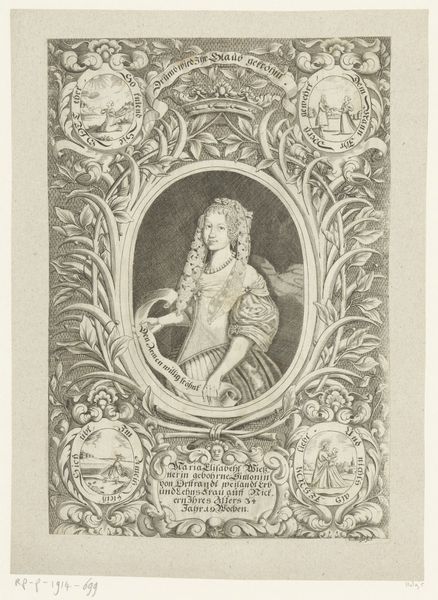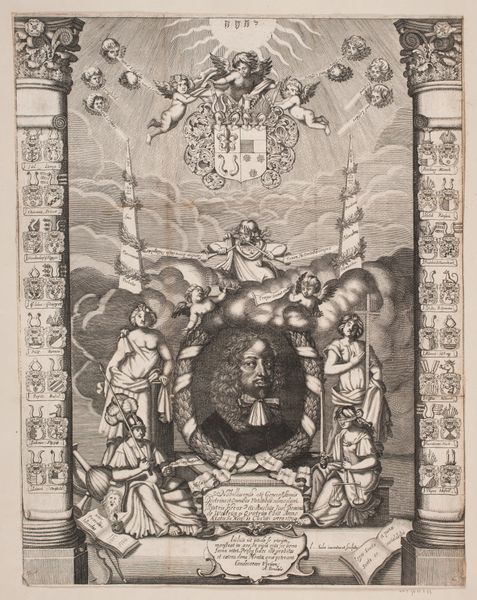
print, engraving
#
portrait
#
baroque
# print
#
history-painting
#
engraving
Dimensions: 297 mm (height) x 191 mm (width) (plademaal)
Editor: So, this engraving by Albert Haelwegh, "Christian V," created around 1670... it's quite a statement, isn't it? I find the composition, with the bust elevated above the landscape and the angels holding the crown, to be rather…grandiose. What are your thoughts when you see this print? Curator: It’s interesting that you use the word "grandiose." I immediately see it as a piece of political propaganda. Consider the context: printmaking in the 17th century was a powerful tool for disseminating information and shaping public perception. This isn't just a portrait; it's carefully constructed to convey specific messages about Christian V's power and legitimacy. What kind of messages do you think the artist wants to transmit to the public? Editor: Well, with the angels and the crown, certainly divine right and legitimacy come to mind. The rays emanating from behind are also visually reinforcing that idea. It’s like they’re trying to depict him as divinely appointed. Curator: Precisely. And consider who would have viewed this image. Prints like this were not just displayed in royal palaces. They circulated amongst the burgeoning middle class, reinforcing social hierarchies and the power of the monarchy. It becomes a part of building a shared visual language. Do you think that this would have been an effective tool for Christian V? Editor: I suppose if it’s visually present in all strata of society then it probably succeeded to some degree. Even now, as a student centuries later, my mind makes those same connections to divine right even without knowing the specifics of the king. Is that what we are supposed to take away? Is art just a tool for political manipulation? Curator: I think manipulation is too strong a word. Think of this engraving as a reflection of the complex relationship between power, art, and public perception. This is about social commentary and the negotiation of authority through visual means, a phenomenon still very relevant in our contemporary world. Editor: So, by looking at it as a socio-political artifact we can actually read and study the society that created it. Fascinating! Thanks for sharing a completely different view! Curator: Thank you, too. It’s valuable to be reminded of art's continued socio-political roles.
Comments
No comments
Be the first to comment and join the conversation on the ultimate creative platform.
